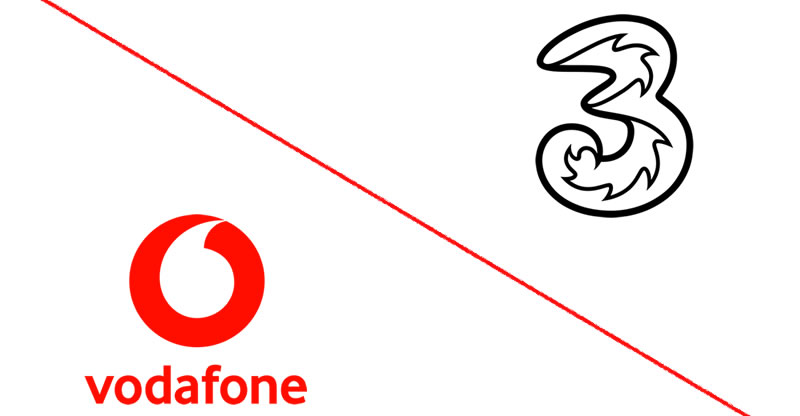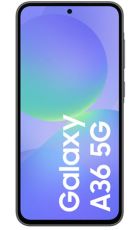The biggest mobile network the UK has ever seen has now launched, as after 18 months of consideration, the Competition and Markets Authority (CMA) has approved a merger between Vodafone and Three, in a deal worth £16.5 billion.
This combined network – which is dubbed VodafoneThree – has 27 million customers, making it slightly bigger than EE’s 25 million, so it’s set to be a huge force in the UK’s mobile landscape. Here’s everything you need to know.
When did the new network launch?
The merger was formally completed on May 31, 2025, leading to the launch of a combined business called VodafoneThree, which is 51% owned by Vodafone and 49% by CKHGT (CK Hutchison Group Telecom Holdings Limited).
What does this mean for Three and Vodafone customers?
At the time of writing (July 22, 2025), not much has changed for customers of Three or Vodafone.
While the combined company is now called VodafoneThree, the two previous networks for now maintain separate brands and customer bases.
However, there are some improvements to be seen, with more on the way. For one thing, seven million of Three’s and Smarty’s customers should now have experienced a 4G boost through combining their spectrum with Vodafone’s, with speed improvements of up to 20%.
Vodafone and Three are also working on letting customers roam on each other’s networks at no extra cost – meaning you’ll automatically connect to whoever’s signal is best in your area. VodafoneThree has already begun rolling this out, and has said that by the end of 2025, this will remove a total of 16,500 sq/km of not spots, which is equivalent to 10x the size of London.
And it’s not just customers of Three and Vodafone that will benefit – those on Smarty, VOXI, and Talkmobile will also see improvements, as those networks are all owned by either Three or Vodafone.
We’d expect other improvements will be announced over time, and wouldn’t rule out a more complete merging of the two networks eventually, but that remains to be seen.
What conditions has the CMA placed on the merger?
The CMA has required Three and Vodafone to deliver on a joint network plan, which would see the merged company invest £11 billion into improving their combined network over the next eight years.
On top of that, the combined network is also required to cap select tariffs and data plans for three years. These caps would also apply to the network’s sub brands like VOXI and Smarty, and would ensure both current and future customers are protected from price rises. However, exactly which plans would be selected for these caps is unclear for now.
Finally, the CMA is requiring this merged network to offer pre-set prices and contract terms to MVNOs (mobile virtual network operators) for three years. MVNOs are all the networks that don’t have their own spectrum, so the likes of Lebara and Tesco Mobile. In other words then, this condition means those sorts of networks should be able to access this new merged network’s coverage with competitive pricing and terms.
What will happen after three years?
It’s too soon to say what will happen after three years, though as most of the CMA’s terms expire after three years there may be some changes.
In addition, Vodafone – which will own 51% of the combined network’s equity at launch – will have the option to buy the remaining 49% after three years, “subject to certain conditions.”
What will this mean for the UK’s 5G rollout?
From what Vodafone and Three are saying, and given that they’ve committed to investing £11 billion into network improvements, this merger is likely to be good news for the UK’s 5G rollout.
The CMA has said that this will “help enhance the UK’s 5G capability”, while Vodafone has said that this “new advanced 5G network will bring vastly superior network quality to tens of millions of consumers and businesses up and down the country”, and that it will “create one of Europe’s most advanced 5G networks”, reaching 99% of the UK population.
In fact, by 2034 the network has pledged to reach 99.95% of the UK population with 5G Standalone – which is a faster form of 5G than you’ll currently find in most parts of the UK.
What is the new network called?
As noted above, this new combined network is called VodafoneThree, but for now the two companies are still keeping separate Vodafone and Three brands (along with Smarty, VOXI, and Talkmobile).
Will this benefit other UK networks?
One obvious potential beneficiary of this merger is O2, as Vodafone and O2 recently extended their long-standing network sharing agreement.
So with Vodafone merging with Three, that essentially means O2 will have a network sharing agreement with Three as well, and should also benefit from the further investment Vodafone and Three will pump into their combined mega network.
Vodafone has argued that as a result, the new network will benefit over 50 million customers (in other words all of Vodafone’s, Three’s, and O2’s customers).
Will this help or harm competition?
This merger could be good for competition, as while it will mean one less major player, it will give the new combined entity the might to better compete with EE, which until now was the UK’s largest mobile network.
The CMA has stated that subject to the merged network implementing its network improvements plan, it “would boost competition between the mobile network operators in the long term, benefiting millions of people who rely on mobile services.”
Margherita Della Valle, Vodafone Group’s CEO, has similarly said the merger will be “great for customers, great for competition and great for the country.”





